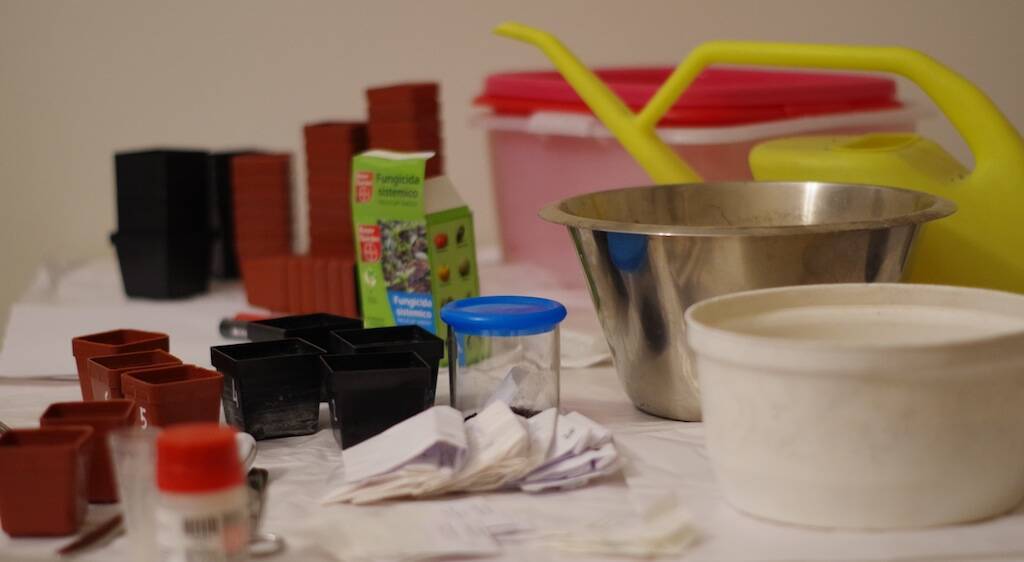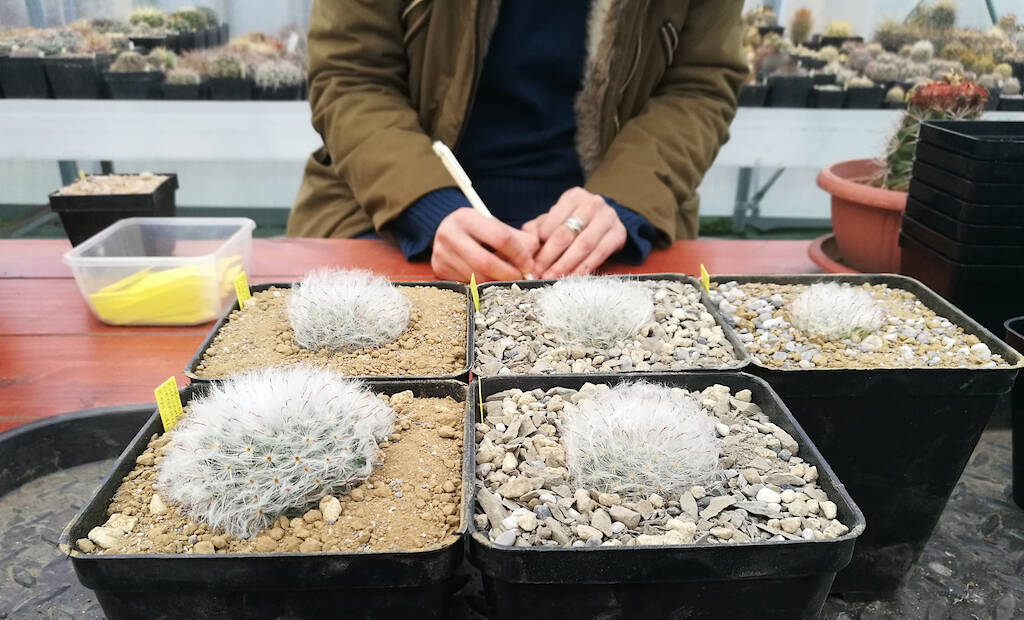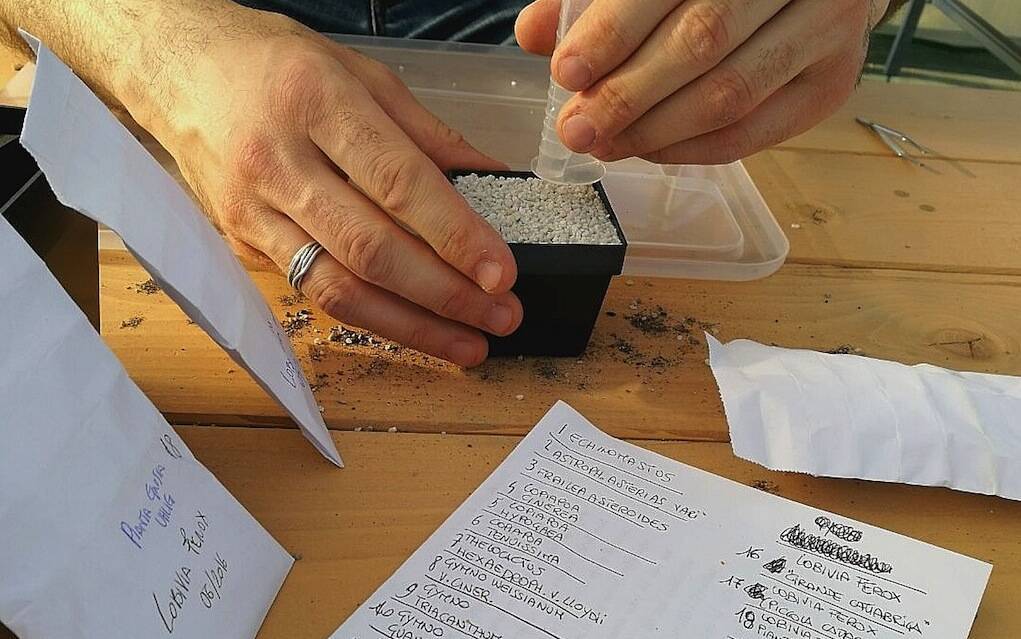I usually sow between the end of March and the first week of April, always in natural light and heat. This year, given the unusually low minimum temperatures, I had to postpone it until mid-April. In these days I have taken advantage of the raising of the lows and the improvement of the days to sow some seeds that I obtained from my pollination last year and some recently purchased seeds. I sowed cacti exclusively: Copiapoa, Gymnocalycium, Pyrrhocactus, Astrophytum, Lobivia, Escobaria, Frailea, Leuchtenbergia, Ferocactus, Thelocactus and more. The seeds had been cleaned immediately after harvesting and stored properly. I have written several articles on sowing: you can find everything in this section of the site: sowing.
In this article I thought of creating a sort of sowing “tutorial”, photographically documenting all the various steps involved in my method. It’s good to specify it: it’s simply my method and I’ve been following it for years now, but it doesn’t mean that it can be good for everyone or that it can be comfortable for everyone (…).
Per proseguire nella lettura dell'articolo Accedi o Abbonati
To continue reading the article LogIn or Subscribe





